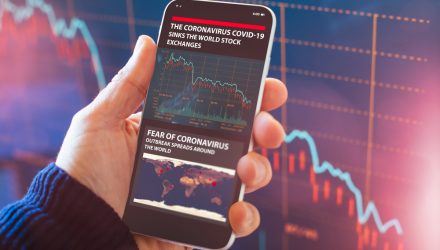The COVID-19 crisis will cement its place in financial history and will be something investors today will remember years from now. The pandemic certainly adds to the plethora of data from past market crashes and recoveries, which uncovers some recurring themes.
The pandemic will also provide additional fodder for factor investing. What the data yields will only help investors understand how to play crashes and recoveries moving forward.
“Equity factor investing matters in both stock market crashes and when positioning for a portfolio recovery as specific factors have a strong tendency to either outperform or underperform the market in each of those regimes,” wrote Damian Handzy and James Monroe in a Financial Advisor article. “As the Covid-19 crash unfolds, equity investors who properly position their portfolios for the subsequent recovery can significantly outperform the broader market. To gain insights into what the future may hold we examined three historical crashes and their recoveries.”
The article specifically looked at the crash of 1987, the tech bubble in the late 90s/early 2000s and the financial crisis in 2008. Here’s what the data revealed from looking at the specific crashes:
- Low-volatility stocks were outperformers while high-volatility stocks underperformed
- Sans emerging markets during the crash in 1987, quality stocks performed well.
- Avoiding small-cap stocks was a sound strategy during the crash in 1987 and during the financial crisis in 2008
- Avoiding growth and value was a sound strategy
- When it comes to factors, the current coronavirus pandemic is similar to 2008’s financial crisis
Here were the trends when it came to recoveries:
- Value, dividend yield, and small caps were strong performers
- High volatility and value were neck-and-neck in terms of performance
- Momentum tilted towards negative
- Growth and low volatility both lost out
Investors looking for options in the current pandemic can look at funds like the Goldman Sachs Equal Weight U.S. Large Cap Equity ETF (GSEW). GSEW seeks to provide investment results that closely correspond, before fees and expenses, to the performance of the Solactive US Large Cap Equal Weight Index (GTR).
The fund seeks to achieve its investment objective by investing at least 80% of its assets (exclusive of collateral held from securities lending) in securities included in its underlying index. The index consists of equity securities of large capitalization U.S. issuers. The index is an equal-weight version of the Solactive US Large Cap Index, a market capitalization-weighted index that includes equity securities of approximately 500 of the largest U.S. companies.
For more market trends, visit ETF Trends.








